If you are someone who suffers from ragweed allergies (like me), you know that this time of year can be pretty miserable. Ragweed pollen is very potent and can cause a wide range of unbearable allergy symptoms. after this article, you will have a better understanding of ragweed, what you can do about your symptoms, as well as explore the tests and treatments available to you. By the time you are done here, you will have all the information you need to have an enjoyable allergy season.
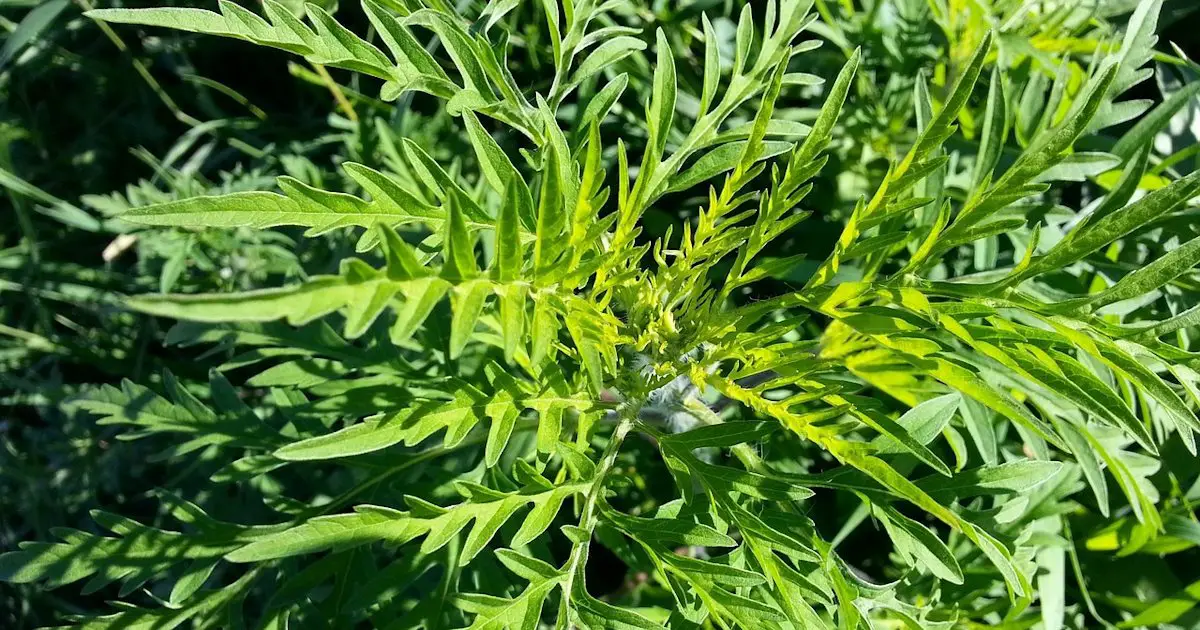
As an Amazon Associate, I may get compensation for qualifying purchases.
Table of Contents
My ragweed allergies have been kicking my butt since the 1900s
I have suffered from ragweed allergies for at least 30 years. Every late summer or fall, the winds kick up tons of pollen, making my symptoms simply miserable. Over the past few years, I have learned through trial and error how to navigate through the common ragweed allergy.
Whether you looking for information for a loved one, or yourself, you will walk away one step closer to tackling the ragweed beast.
My Ragweed Allergy Definition
Ragweed Allergy: The time of year when the weather is cooling off, the winds are picking up, and my allergies are miserable from August through October. My symptoms may include Lots of sneezing, a runny nose, and my eyes watering like faucets.
What is a ragweed allergy?
If you suffer from ragweed allergy, it’s because your immune system overreacts to the seasonal ragweed pollen. Your body sees the pollen as an invader. When this pollen enters your system through your eyes, ears, nose, or mouth, your body releases histamines in an attempt to get rid of it. The release of histamine causes symptoms like watery eyes and runny nose.
What is ragweed?
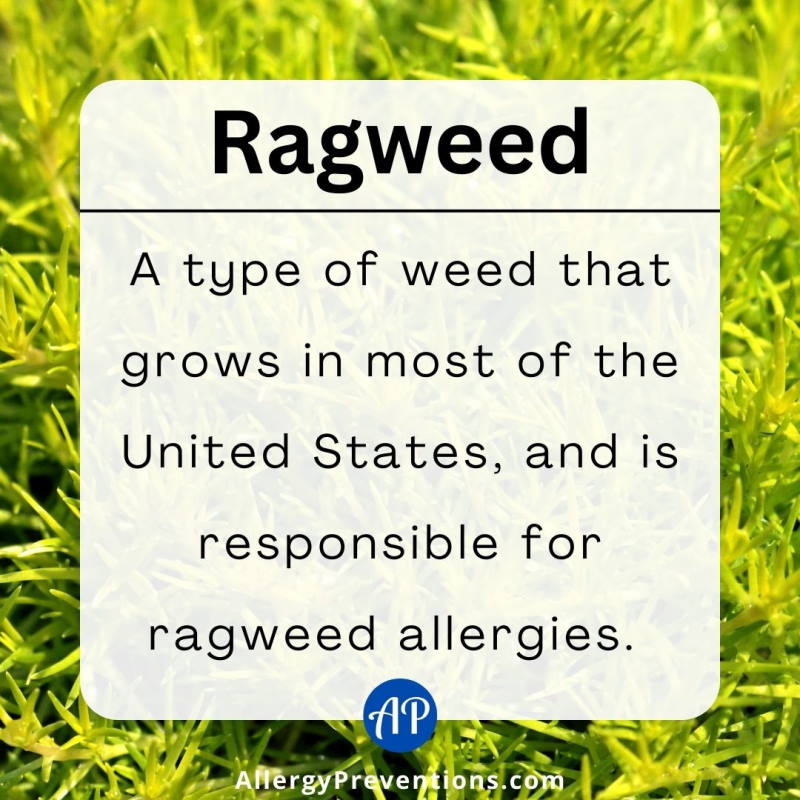
Ragweed is a type of weed that grows in most parts of the United States. According to the Pennsylvania Department of Environmental Protection, there are at least 17 species of ragweed in the U.S. These plants are commonly found in urban areas near roads, abandoned lots, fields that are not in use or recently plowed, and along river shores.
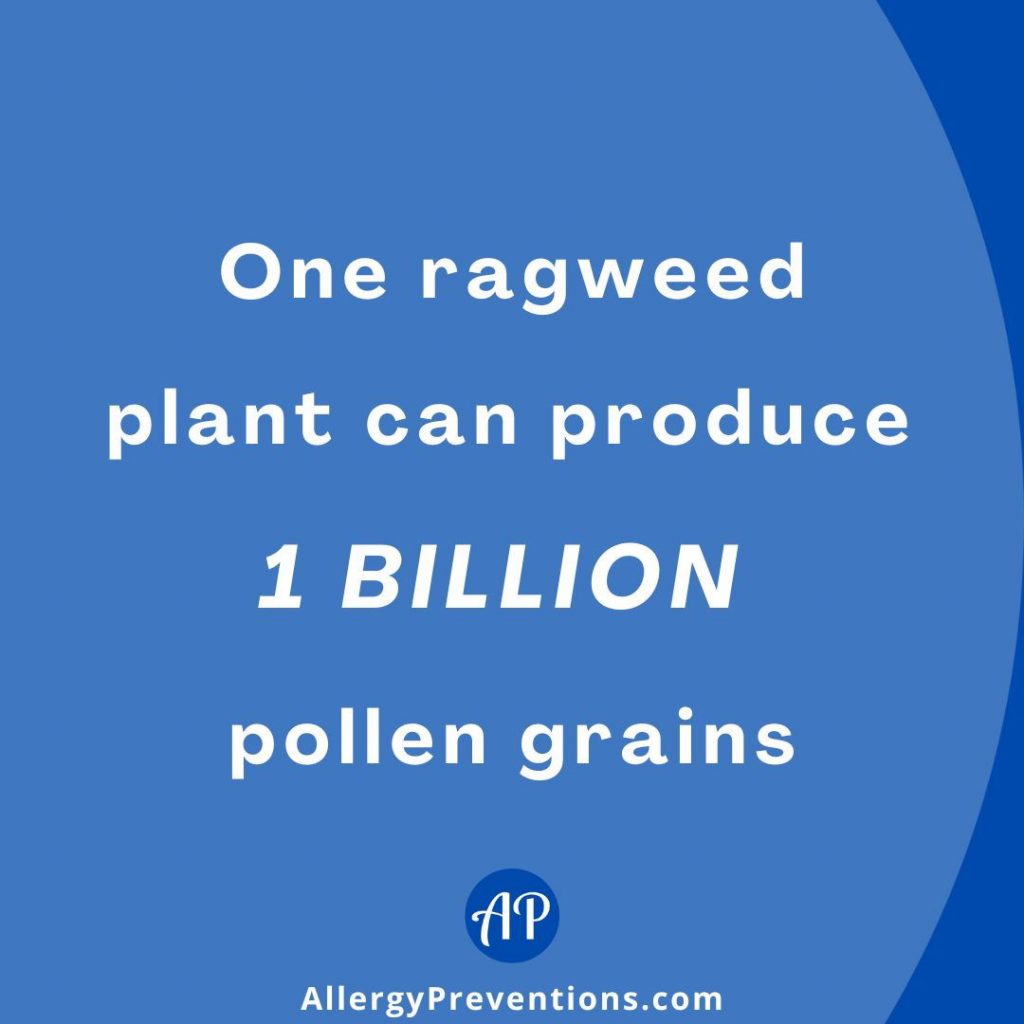
Fun Fact: One ragweed plant can produce up to 1 billion pollen grains.
According to an article in the National Library of Medicine, one plant can produce up to a billion grains of pollen, and it only takes 5 – 20 pollen grains to make you symptomatic! That means one plant produces enough pollen to make at least 50 million ragweed allergy sufferers miserable.
Pictures of Ragweed
You may be wondering, what does ragweed look like? Well, just like any plant it takes on many forms through its lifecycle, and even though there may be some visual differences based on the species of ragweed, they all generally look the same. Here are some photos of what a fully grown ragweed plant looks like.
Those photos are a collaboration of photos from the Maryland Biodiversity Project. There are many more ragweed pictures to check out, these are just my highlights.
Photo of a Ragweed Plant Up Close
Here you can see the ragweed plant and its seed pods up close.
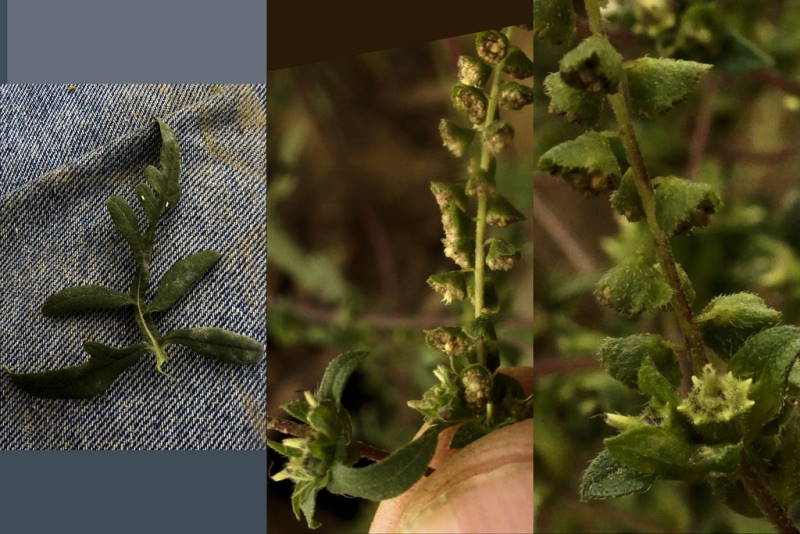
Annual Ragweed Image
A deep green annual ragweed plant. The ragweed plant’s leafy density varies based on the species and living conditions.
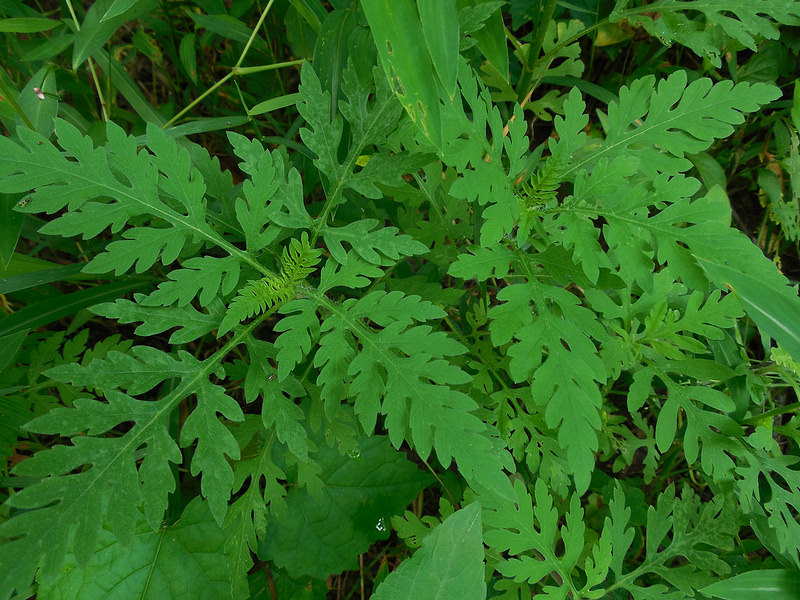
Ragweed Plant Near Water Image
This picture shows the classic placement of a ragweed plant. Most ragweed plants thrive near a water source where the soil is less compacted and the plant can take root.
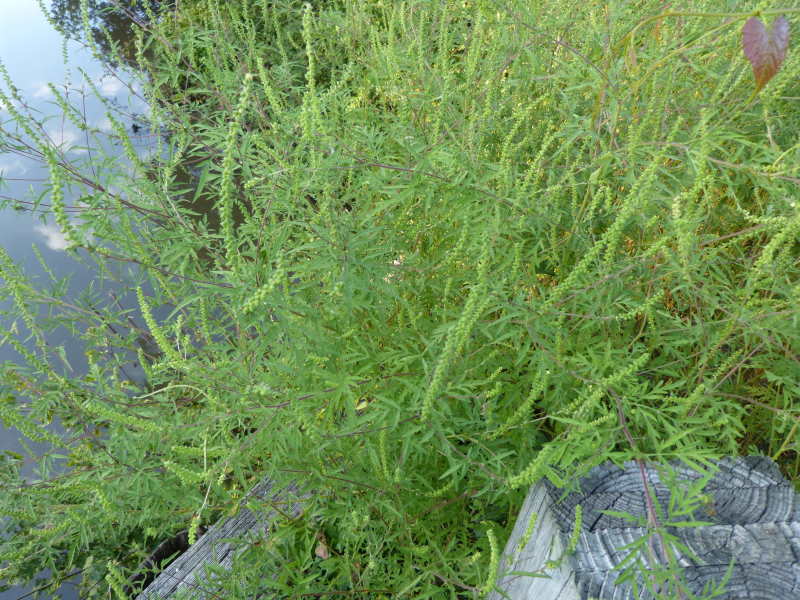
Young Ragweed Plant Picture
This ragweed plant has not yet gone through its flowering and shedding seeds phase.
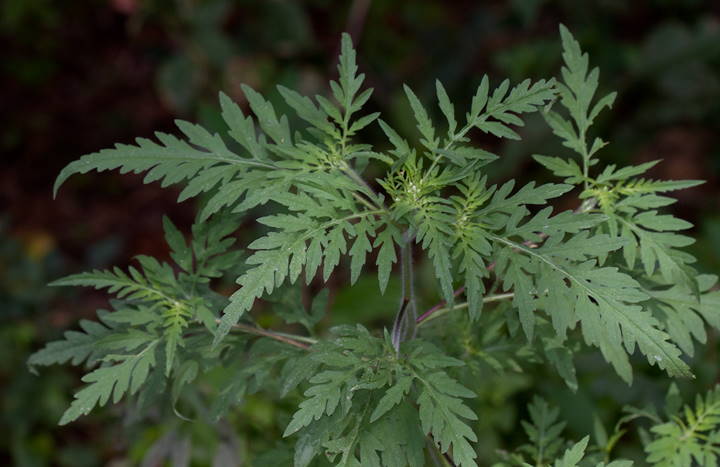
Flowering Ragweed Plant Image
Ragweed plants flower to reproduce. This plant has bright yellow ends on the stems. This is typically the plant’s final phase before the process restarts in the spring.
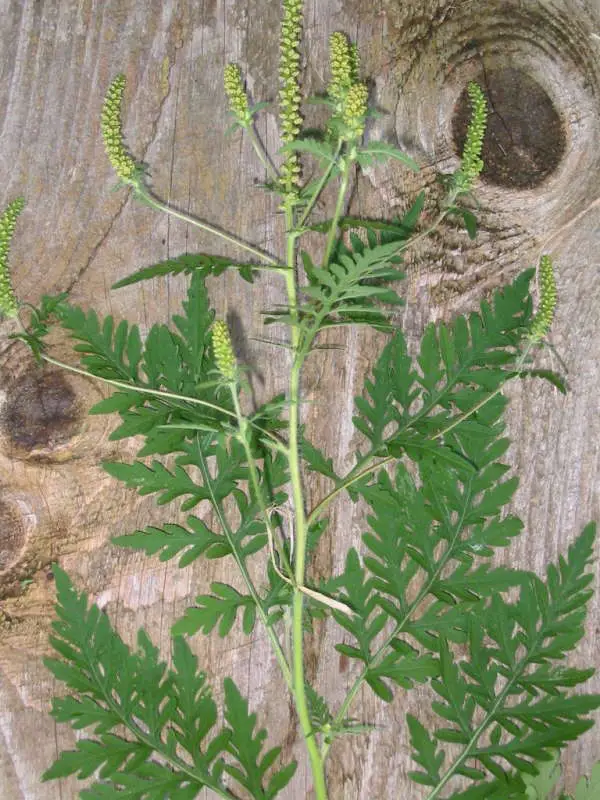
Budding Ragweed Plant Picture
Here you can see that the ragweed plant is budding. The buds are at the top of the plant so they can be easily spotted by pollinators. If you have a ragweed allergy, these buds will help you identify the plant so you can steer clear.
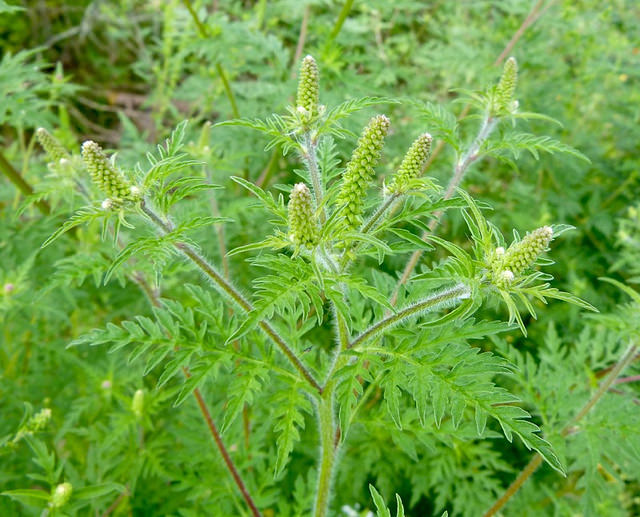
Most Common Ragweed Species in the U.S.
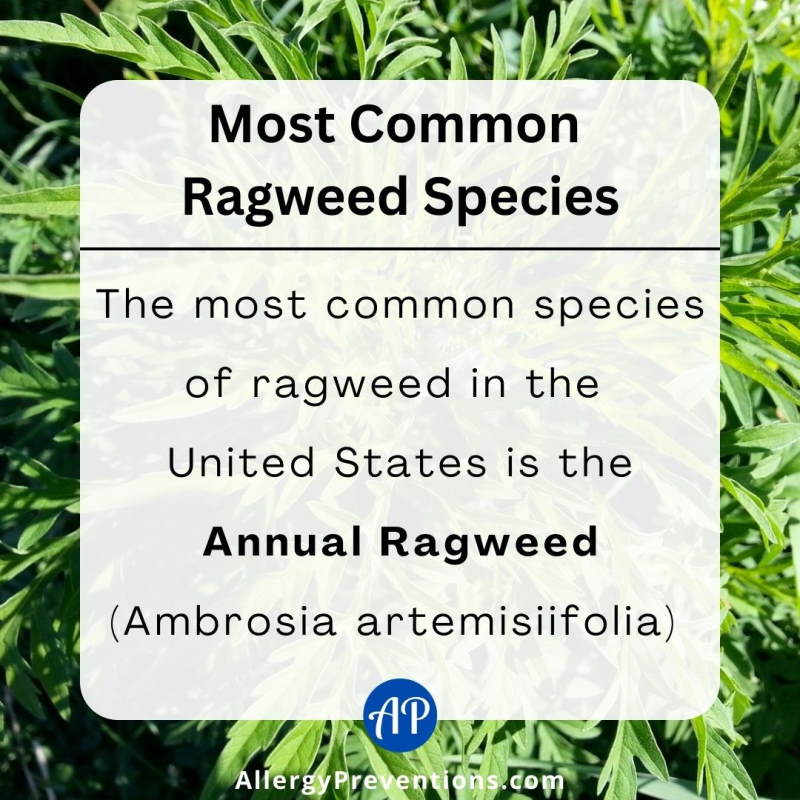
The most common species of ragweed in the United States is the Annual Ragweed (Ambrosia artemisiifolia), also known as the Common Ragweed. The runner-ups by popularity are the Giant Ragweed (Ambrosia trifida) and the Western Ragweed (Ambrosia psilostachya).
When is ragweed allergy season?

Ragweed allergy season typically starts in late summer and can last until fall, or the first frost. The peak time for ragweed pollen is usually in mid to late September. Depending on where you live and other environmental factors, the ragweed season could be longer or shorter.
In the United States, allergy seasons are getting longer each year. A small study conducted by the EPA concluded that in 10 years, the pollen season increased by 17.5 days.
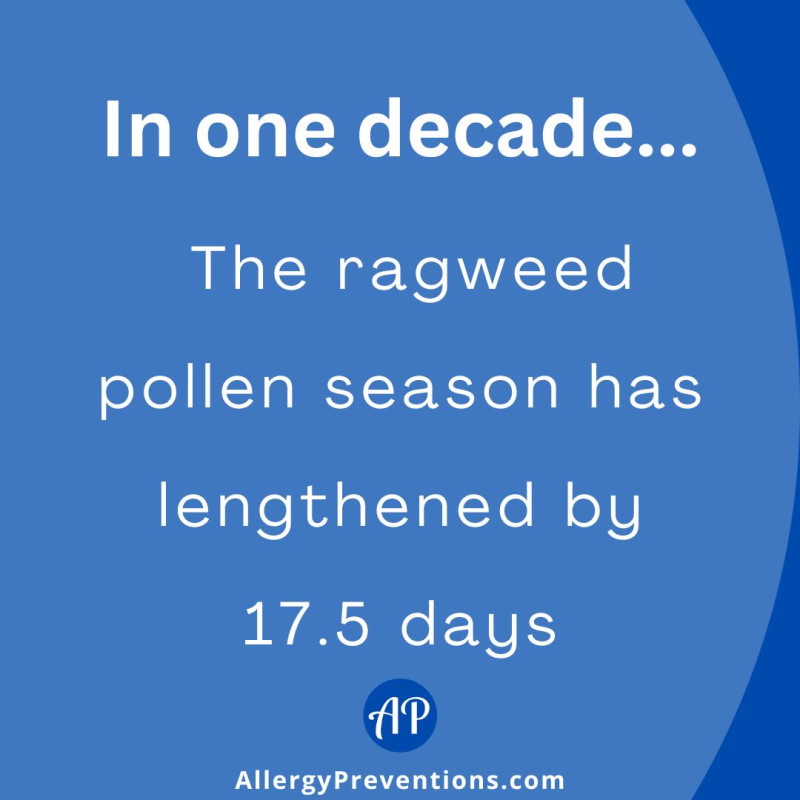
Ragweed Allergy Symptoms
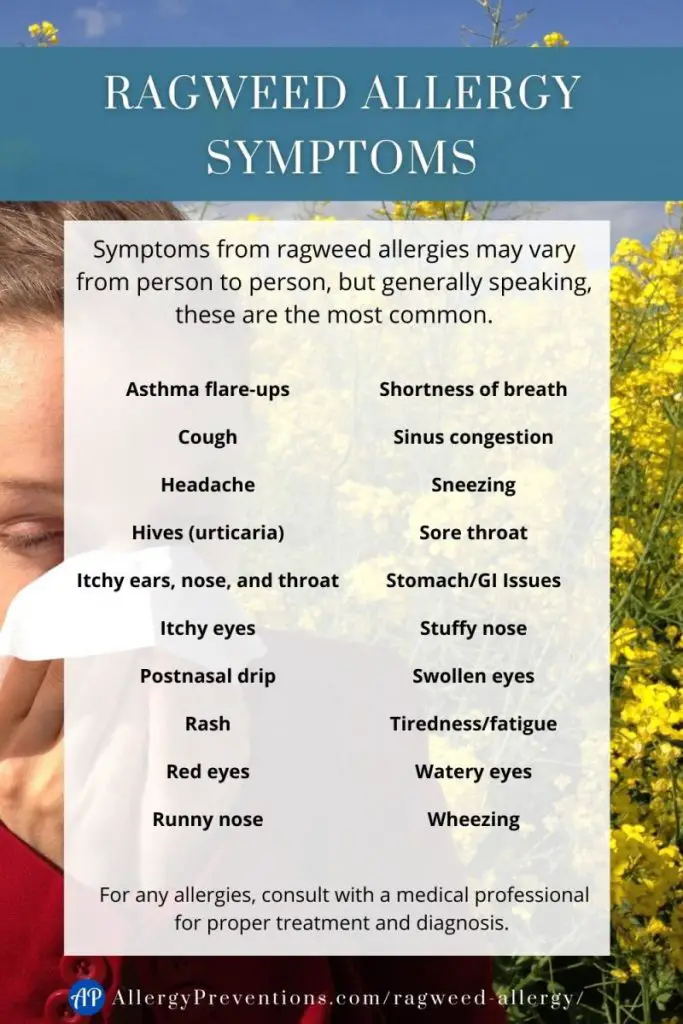
Symptoms from ragweed allergies may vary from person to person, but generally speaking, these are the most common. The species of ragweed does not change the symptoms. Regardless if you are allergic to common ragweed, giant ragweed, or western ragweed, these symptoms are possible:
- Asthma flare-ups
- Cough
- Headache
- Hives (urticaria)
- Itchy ears, nose, and throat
- Itchy eyes
- Postnasal drip
- Rash
- Red eyes
- Runny nose
- Shortness of breath
- Sinus congestion
- Sneezing
- Sore throat
- Stomach/GI Issues
- Stuffy nose
- Swollen eyes
- Tiredness/fatigue
- Watery eyes
- Wheezing
How do I know if I have a ragweed allergy?
There are a few ways to determine if you have a ragweed allergy. Your doctor may perform a skin prick test or a blood test. You can also figure out if you have a ragweed allergy by personally tracking your symptoms, and the time of year when your symptoms are the worst. For example, if your allergies are only bad in the late summer and into fall, chances are you have a ragweed allergy.
Tests for Ragweed Allergies
If you think you may have a ragweed allergy, the best thing to do is to see an allergist. Allergists are specially trained to diagnose and treat allergies. The two best testing options are a skin prick test (scratch test) and blood testing. Once your allergy is confirmed, the allergist will work with you to create a treatment plan.
Skin Prick Test for Ragweed Allergies

A skin prick test is a common way to diagnose seasonal allergies, including ragweed. During this test, a small amount of ragweed extract is placed on the skin and then pricked with a needle. If you are allergic to ragweed, you will develop a red, itchy rash at the site of the prick. This testing method is preferred as it is more accurate than any other allergy testing.
I have received the skin prick test a couple of times; you will be itchy after. The plus side is you can take an antihistamine after they read the results, and the doctor usually has a cream that takes away the itch as well.
Ragweed Allergy Blood Test

A blood test can tell if you have seasonal allergies by looking for the presence of IgE antibodies. These antibodies are produced in response to allergens, and they can trigger an allergic reaction. A blood test can also help determine the severity of your allergy, and it can help your doctor recommend the best treatment options.
Test Results
Your doctor should provide you with a list of all the allergens you reacted to on both types of tests. For Ragweed, the results are usually listed as “Ragweed Common” or “Ragweed Short”.
How long does a ragweed allergy last?
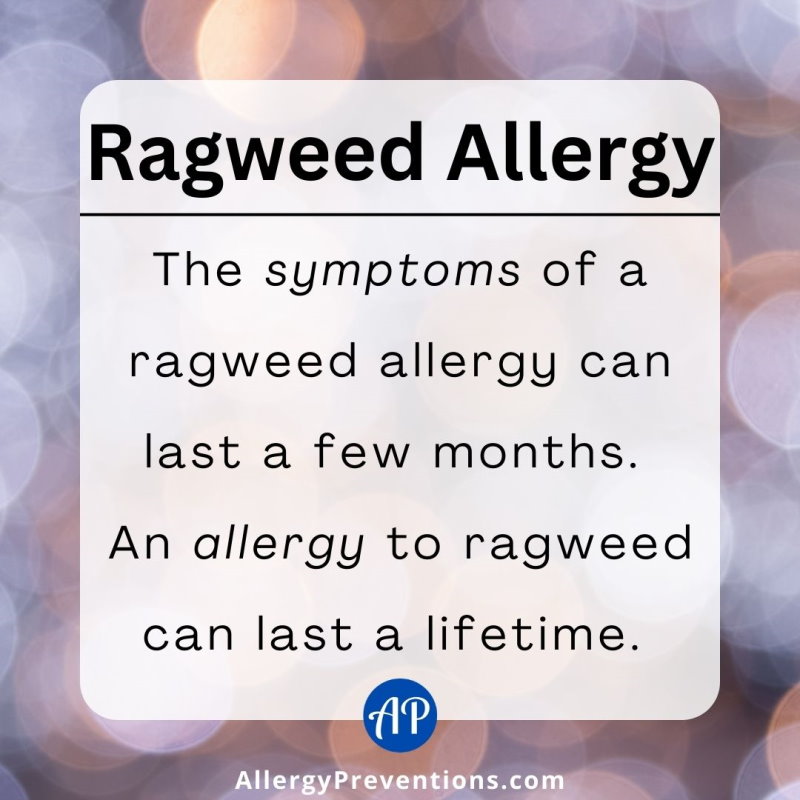
The symptoms of a ragweed allergy usually last a few months, starting in late summer and ending in the fall. A ragweed allergy (not just the symptoms) itself can last a lifetime. Allergies are our body’s (immune system) overreacting to a substance, in this case, ragweed pollen.
Best Allergy Medicine for Ragweed
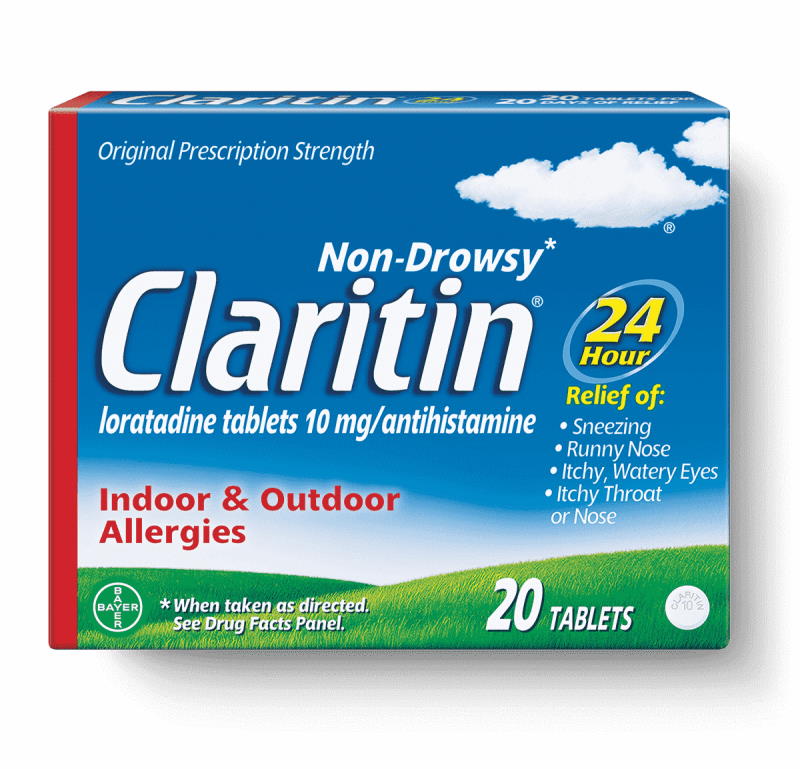
In my opinion, the best allergy medicine (antihistamine) for ragweed allergy symptoms is Loratadine, more commonly known as Claritin®. I have been taking allergy pills for 20+ years and I have found Claritin to work the best for my symptoms and had the least amount of side effects. In fact, I don’t think I have had any side effects from Claritin.
Another perk and reason that I consider this to be the best allergy medication, is that it is available OTC (over-the-counter).
You can buy it online or in-store. I have found it to be the cheapest on Amazon, especially if you sign up for the subscribe and save. They also have a generic version that is even cheaper, but I haven’t tried it out yet.
All antihistamines work to block histamine in the body, and everyone reacts differently to medications. If you read “Best Allergy Medicine for Ragweed” you can get in-depth reasons why the other antihistamines were not my #1 choice. Just because they didn’t work out for me, does not mean they won’t work out for you.
Treatment for a Ragweed Allergy

There are a few different types of treatments for ragweed allergies. It’s important to talk to your doctor about the best treatment plan for you. By managing your symptoms you will have a much more pleasant allergy season.
Avoidance
The best solution for ragweed allergies is avoidance, which is avoiding the things that trigger your allergies. If you know that you’re allergic to ragweed, you can avoid it by staying inside when the pollen count is high, keeping your windows and doors closed, and wearing a face mask when you’re outside.
Medications May Help
Another treatment option is medication. There are a few different types of medications that can help treat ragweed allergies, including antihistamines, decongestants, and nasal sprays. These medications come in over-the-counter and prescription strength. Talk to your doctor to find the best options for you.
Ragweed Allergy Shots

Immunotherapy (allergy shots) is a common way to treat environmental allergies like ragweed. The shots help your body build up immunity to the allergen so that when you are exposed to it again, you will not have as much of an allergic reaction.
This is a long-term treatment, and it may take several years for the full effects to be seen.
It is important to note that allergy shots should only be administered by a trained medical professional, and they may not work for everyone. On the other side of the coin, they could be the solution to stopping your ragweed allergies.
Additionally, there can be side effects, such as irritation at the injection site or a severe allergic reaction. I have been getting allergy shots for a few years, and have seen great improvement with my seasonal allergies.
Ragweed Allergy Home Remdies
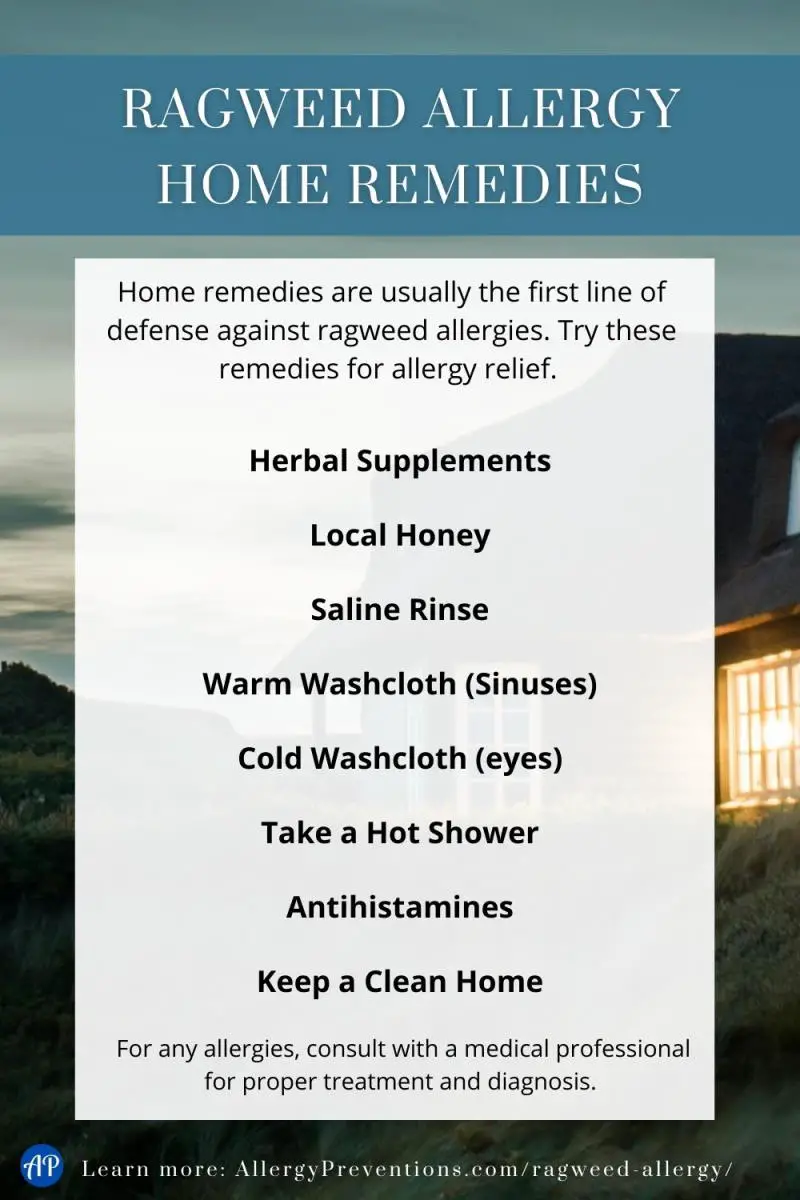
It’s that time of year again when the pollen count is high and people are sneezing and wheezing all over the place. If you’re one of the unlucky ones who suffer from ragweed allergies, then you’ll know just how miserable it can be. Here are some allergy home remedies to help ease your ragweed symptoms.
Herbal Supplements
Herbal remedies such as nettle, ginkgo biloba, and butterbur can be effective in relieving allergy symptoms and are natural. Consult with a healthcare professional before trying any new supplements or herbal remedies to ensure they are safe for you to use.
Local Honey
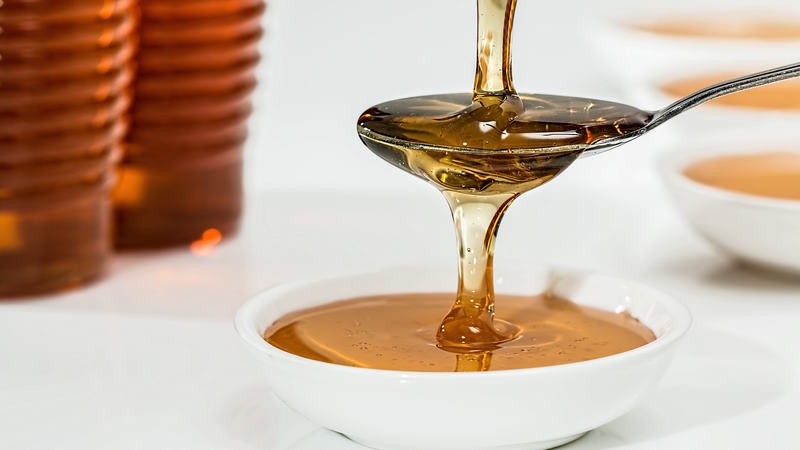
Another natural option is to start taking local honey or bee pollen supplements regularly, as this can help build up your tolerance to pollen and reduce allergy symptoms. Talk with your doctor before trying new remedies.
I have tried local honey and also bee pollen supplements, but I did not really see much of a difference in my allergy symptoms. With the bee pollen, I instantly had an itchy throat that felt like it was closing up (OAS). Just a bit of warning, just because it is natural does not mean it is safe.
Use A Saline Rinse or Spray
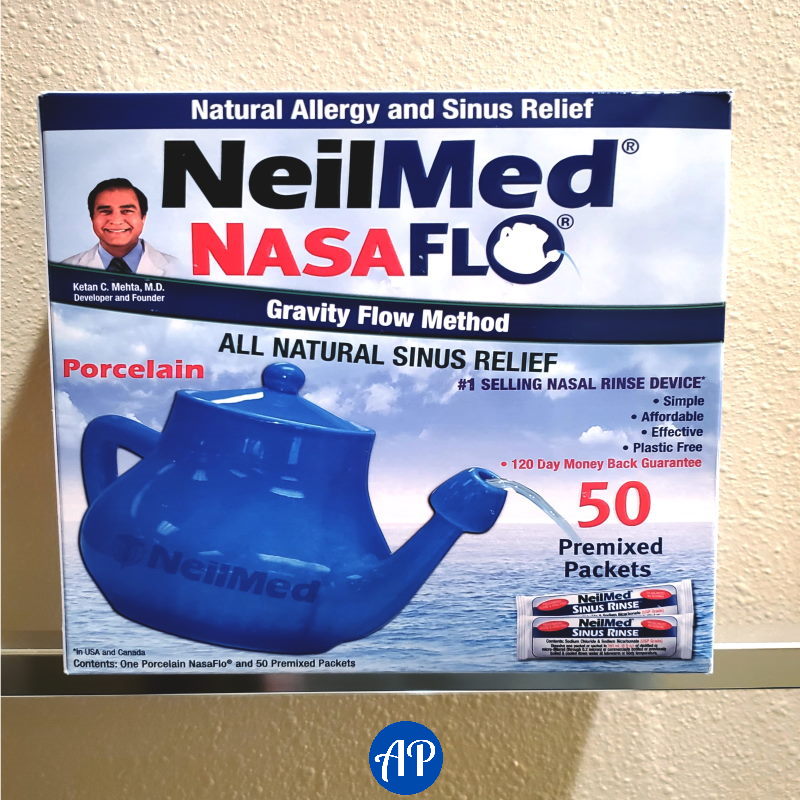
You can try using a saline nasal spray to flush out any irritants in your nose. A saline rinse is natural and helps to clear the nasal passages and reduce inflammation. It is easy to do and can be done at home with just a few simple supplies. My go-to is the neti-pot. I have been “Neti-potting” (not sure that is a word) for about 10 years because it works. I bought my Neti Pot on Amazon.
Try A Warm Washcloth
A warm washcloth can be used to place on your face to relieve ragweed sinus symptoms. The warm, moist air can help break up mucus and provide you relief. Try this out by taking a clean washcloth, running it under warm water, squeezing out the excess water, and placing it on your face.
Try a Cool Washcloth
If your symptoms are not so much sinus-related, but more of the red or swollen eyes, a cool washcloth provides some great natural relief. Take a clean washcloth, run it under cold water, and ring out the excess, place it over the closed eye, and begin to feel the relief.
OTC Antihistamines

Over-the-counter antihistamines are a home remedy that can help relieve allergy symptoms from within the body. Most households have allergy meds on hand, which is why they are considered a home remedy.
If you are unsure of the best over-the-counter ragweed antihistamine, be sure to check out the Best Allergy Medicine for Ragweed.
Keep Your Home Clean

One of the best things you can do is to keep your house and car clean and free of ragweed pollen. Vacuum regularly, especially in areas where pollen and dust tend to collect, such as carpets and curtains.
Keep windows closed during high pollen times, and shower before bed to wash off any pollen that may have collected on your skin or hair during the day.
How to Prevent a Ragweed Allergy

When you have a ragweed allergy, the best way to prevent ragweed allergy symptoms is avoidance. Avoiding ragweed pollen is extremely difficult unless you live close to the Arctic Circle. There are a few preventive measures you can take without moving to the North Pole.
Limit Your Time Outside

Reducing the time you spend outdoors during peak ragweed season could do wonders for your symptoms. If you do go outdoors, your best days will be the rainy or misty days. The moisture will help weigh down the pollen so it isn’t floating freely in the air.
Wear a Mask
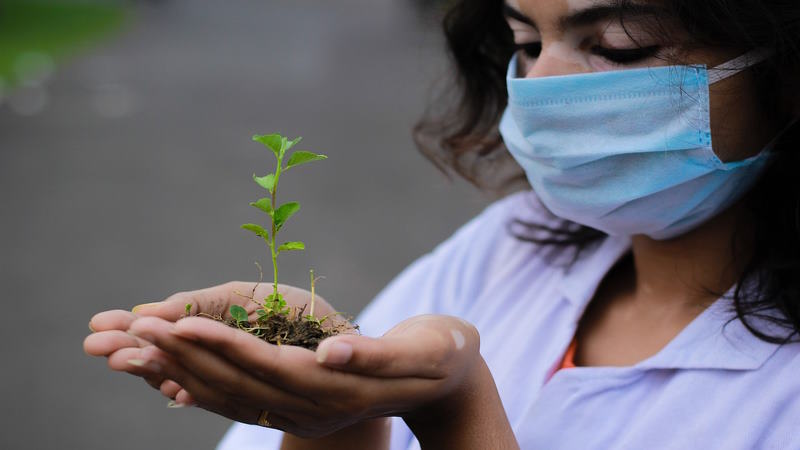
Wearing a mask while outside can drastically reduce the amount of pollen that you breathe in, thus lessening your allergic reaction. Pollen looks tiny to the naked eye, but under a microscope it is massive. This is important to know because that means it doesn’t matter what type of mask you are wearing, it is going to stop pollen. You could use a COVID mask, neck gator, or disposable mask and be good to go.
Create an Allergy Safe Haven
As an allergy sufferer, you will need an allergen-free space, preferably in your home (if not your whole home). Here are a few ideas to help with keeping your home allergen-free.
Take Off Your Shoes When in the Home

Taking off your shoes when you enter the home will keep your floors cleaner longer, and track in less of the outdoors, including pollen. This may feel foreign at first, but trust me it’s worth doing.
Clean Your Floors Regularly
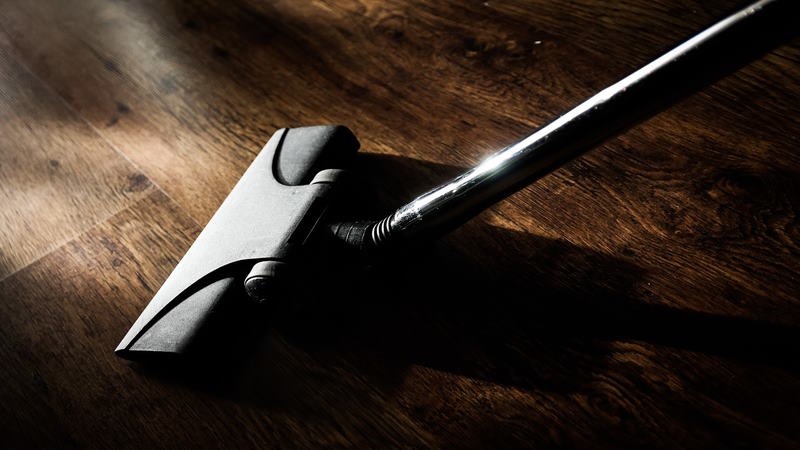
Vacuuming and sweeping your floors regularly will remove any pollen that may have snuck into your home. Pollen likes to hitchhike on our clothing, skin, and in our hair. By keeping the floors clean, you will remove the allergens and prevent them from spreading to other areas of the home.
Remove Dust Often

Dusting all horizontal surfaces will help create your allergen-free space. When the sun shines through the home just right, you can see all the particles floating around in the air, some of those particles are pollen. Eventually, those particles will settle on your items in the form of “dust”.
If you do not remove the dust, then when it is disturbed it will become airborne again and bring back your allergy symptoms.
Find a duster that traps the dust. Whatever you do, do not use a traditional feather duster. Feather dusters do not absorb dust, but push it off the item and back into the air.
Keep The Windows Closed

Open windows bring in fresh air, and also a fresh dose of pollen. Pollen is pretty small which means it can easily fit through your window screens. When you keep your windows open you are giving the pollen a free ride inside. Open windows will make it impossible to create an allergy-safe haven.
Use an Air Purifier

Ragweed pollen loves to be in the air and travel. Stop that pollen from making its way throughout the house by using a HEPA filter. HEPA filters are great at filtering viruses, pollen, dust, and violent organic compounds (VOCs) from the air. The air in your home will just feel and smell cleaner.
We have a few HEPA filters throughout the house, and we would be miserable without them. Our latest addition is the Levoit Core Mini which you can find on Amazon. We have no complaints, and it has proven to be a wonderful addition to our collection.
Change Out of Outdoor Clothes

Whether you are working outside, or just enjoying the great outdoors, your clothes are gathering pollen. Change into some fresh clothes after you have been outside to prevent the pollen from spreading into your home, in your air, and onto your furniture.
Shower Before Climbing into Bed

To create a safe haven in your home, shower before you climb into bed. If you have been outside and don’t shower before climbing into the sheets, you may have some miserable nights by laying in the pollen you are allergic to. Showering will rinse off the allergens and keep them out of your bed.
Foods to Avoid With a Ragweed Allergy
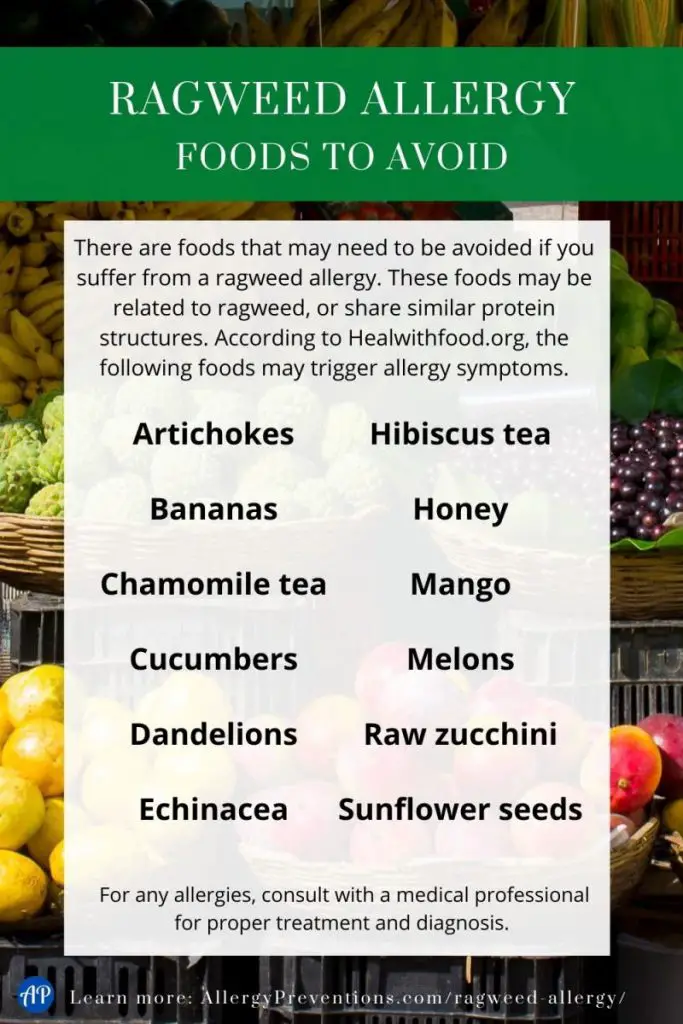
Some foods may need to be avoided if you suffer from a ragweed allergy. These foods may be related to ragweed, or share similar protein structures. According to Healwithfood.org, the following foods may trigger allergy symptoms:
- Artichokes
- Bananas
- Chamomile tea
- Cucumbers
- Dandelions
- Echinacea
- Hibiscus tea
- Honey
- Mango
- Melons
- Raw zucchini
- Sunflower seeds
For me, the food allergy that gives me symptoms from this list is chamomile tea. I suspect that because of my lifelong ragweed allergy, chamomile is a no-go.
Final Thoughts
Ragweed allergy season is not pleasant for anyone with a ragweed allergy. Just remember to create an allergy-free space, and do what you can to mitigate your pollen exposure.
What have you found helpful, or not helpful during ragweed allergy season? Let me know! Chris@allergypreventions.com
